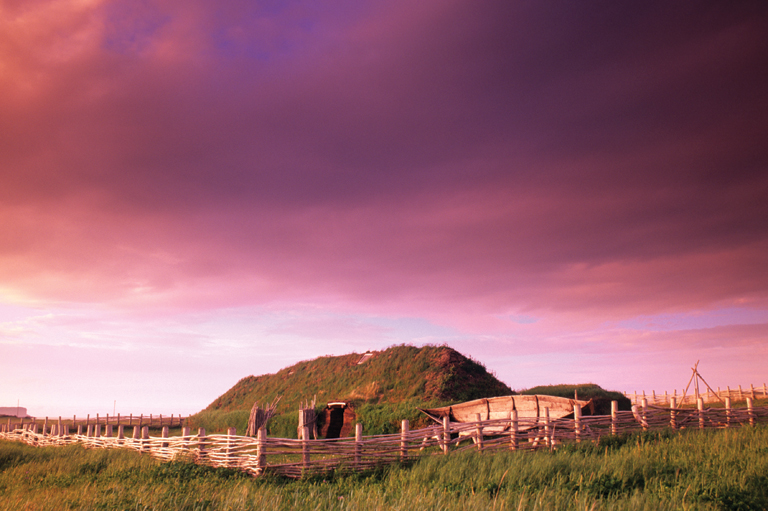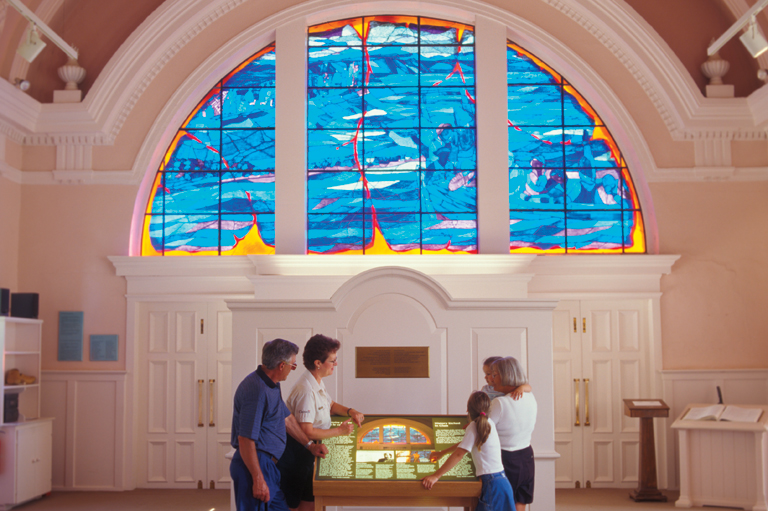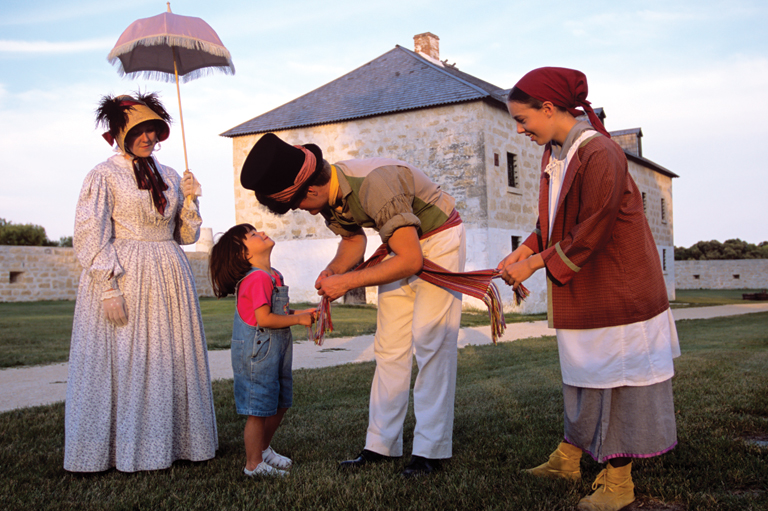Batoche
This peaceful-looking village on the banks of the South Saskatchewan River was the final battlefield of the Northwest Rebellion of 1885. The seeds of the rebellion originated years earlier when the Métis — descendants of fur traders and indigenous people — found their existence threatened by settlers pouring in from Eastern Canada. After Louis Riel’s failed Red River Rebellion in 1869, many Métis moved west to Saskatchewan for a fresh start.
When the Métis failed to receive the protection they were seeking from Ottawa, they again turned to Riel, who came out of exile and established Batoche as the seat of the provisional government of Saskatchewan. Dominion troops poured in quickly on the newly built railway. The small Métis force had a few victories but was finally surrounded at Batoche by soldiers who outnumbered them by more than two to one.
Armed only with rifles against a force equipped with a rapid-fire Gatling gun and four nine-pounder cannons, the Métis resisted fiercely for four days before being overwhelmed. Riel and co-leader Gabriel Dumont escaped, but Riel later turned himself in and was eventually hanged for treason.
What occurred here reverberates to this day. Riel remains a controversial figure and Métis rights continue to be an issue.
Time period: 1860–1900.
Things to do: Take in the award-winning audio-visual presentation at the visitor centre, then wander the site for a self-guided tour. View the restored buildings, such as the church, with its bullet holes above the doorway, tangible evidence of the battle. Walk a hiking trail that passes the cemetery and rifle pits used by the Métis defenders. Time your visit for special events, such as the annual "Back to Batoche Days," a large Métis festival that takes place on the third weekend in July.
Getting there: Batoche is about an hour’s drive northeast of Saskatoon.
Visit Parks Canada’s website
Themes associated with this article
Advertisement











